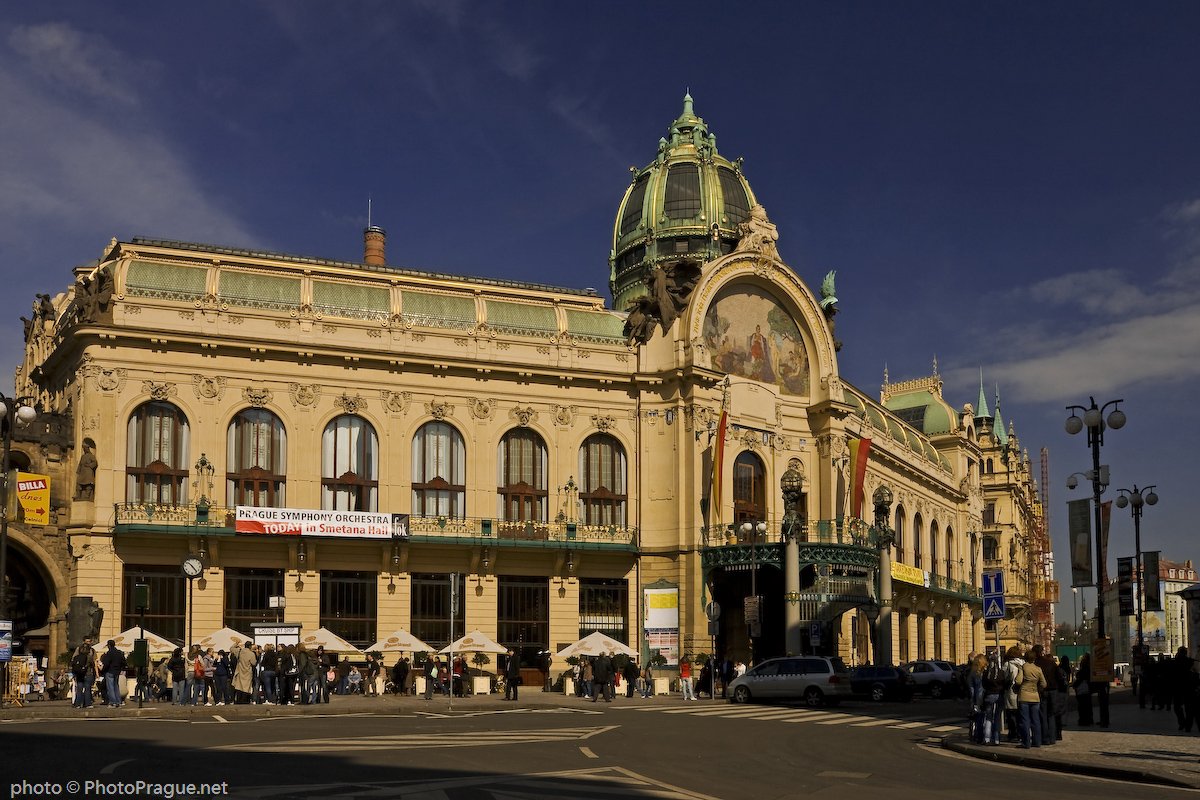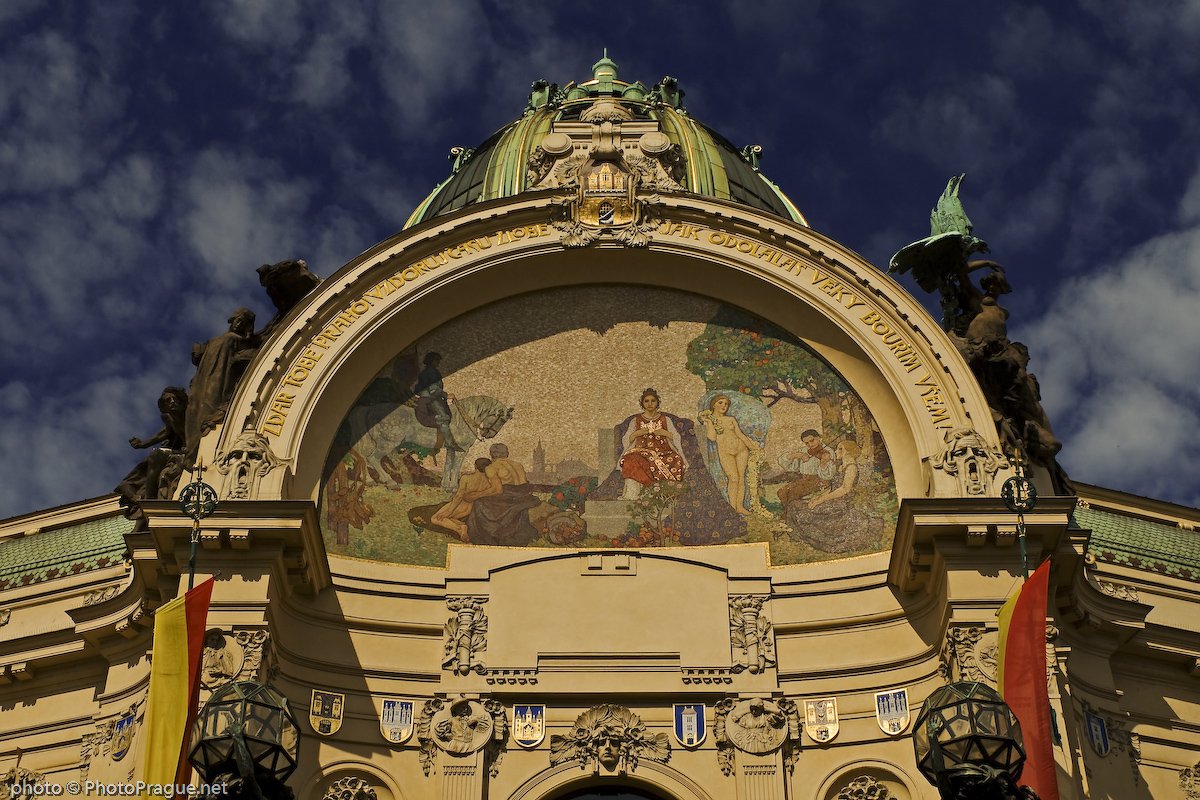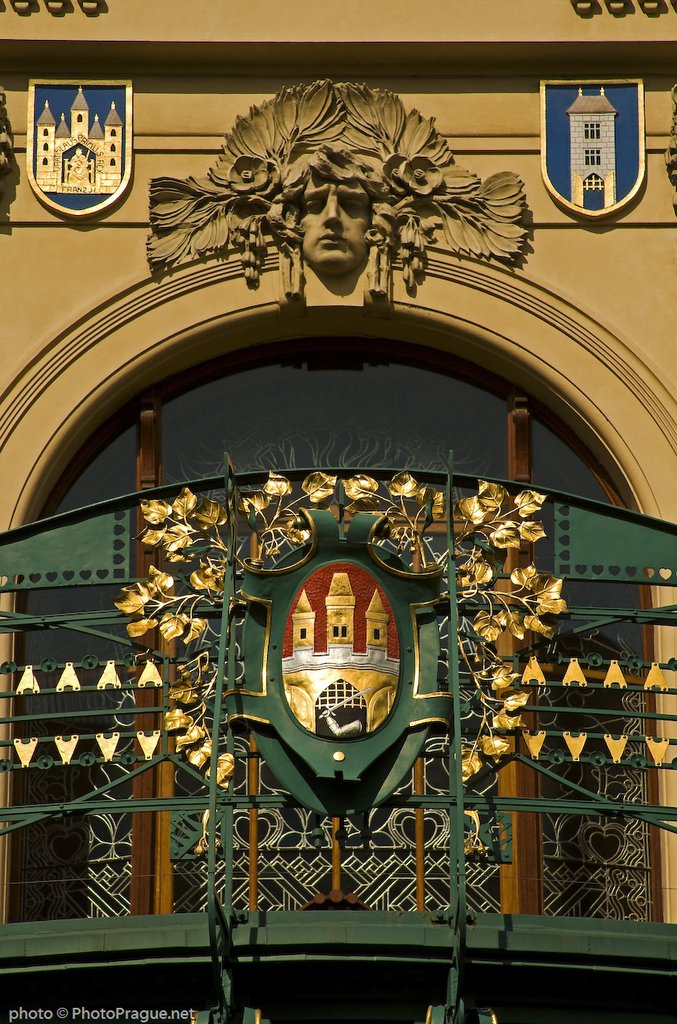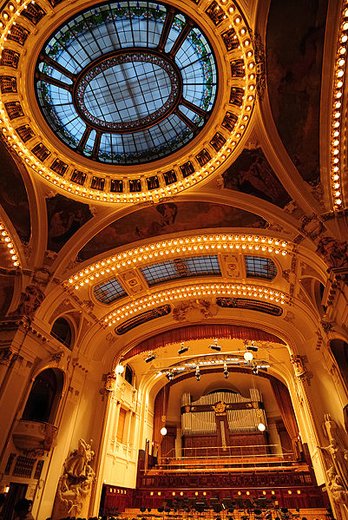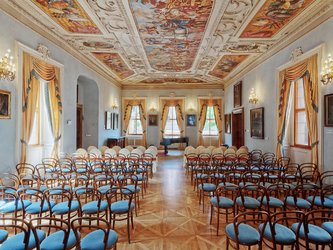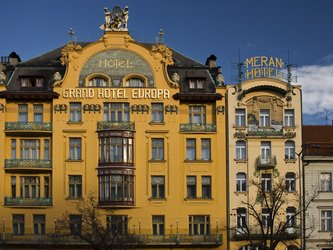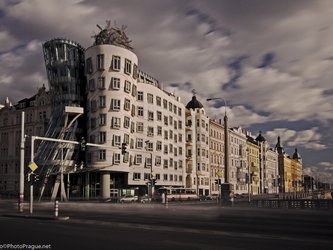Built at the beginning of the 20th century, Prague’s Municipal House boasts an exuberant and grandiose decoration. A multi-purpose building, it boasts two restaurants and a renowned café, an American bar, the great Smetana Concert Hall and numerous ceremonial rooms decorated by the greatest artists of the time.
On the very site of the Prague Municipal House was a former Gothic imperial palace built at the end of the 14th century by Emperor Wenceslas IV: inhabited by the sovereigns of Bohemia for over a century, converted into a seminary and then into barracks, it was gradually abandoned and finally demolished in 1902.
At the height of the National Revival, and at a time when the Germans were dominating the area around Na Příkopě Avenue, it was decided to build a multi-purpose building here, which would splendidly express the liveliness of Czech culture, offering a wide range of cultural activities accessible to all, and celebrating the prestige of the municipality. The gable end of the monumental central portal is dominated by an allegorical mosaic depicting the “Apotheosis of Prague”.
It is not insignificant that a monumental, highly decorative Art Nouveau style was chosen for this building, even though it was rather late and even out of fashion by the time it was inaugurated in 1912. At a time when the decorative arts were triumphant throughout Europe, a whole generation of artists – architects, sculptors, painters, mosaicists, stucco artists, cabinet-makers, glass-makers... combined their talents to build this triumphant work of dazzling decoration. You won’t know which way to turn, as the decorations abound in brightly coloured ornamental details.
Even for a brief glimpse, be sure to take a look inside: the ground floor is occupied by a prestigious café completely renovated and the famous Municipal House Restaurant, the staircases are decorated with beautiful ceramics evoking picturesque old Prague, and in the basement, you will discover the traditional Municipal House Brewery with its country charm and a friendly American bar.
Upstairs, you can visit the luxurious reception rooms, ceremonial rooms decorated by the greatest Czech artists of the time, including Alfons Mucha, who designed the vaulted ceiling of the Mayor’s Room, which opens directly onto the central balcony. It was from here that Czechoslovakia’s independence was officially declared in 1918 by Tomáš Garrigue Masaryk, and in 1989 its return to democracy after 40 years of Communism by Václav Havel.
The most prestigious venue is the huge 1,300-seat Smetana Concert Hall, home to the Prague Symphony Orchestra (FOK). This is also where the annual Prague Spring Festival opens with Bedřich Smetana’s masterpiece, Má Vlast (“My Homeland”). If you are interested in tickets for this festival, feel free to contact us, we would be happy to arrange them for you.

